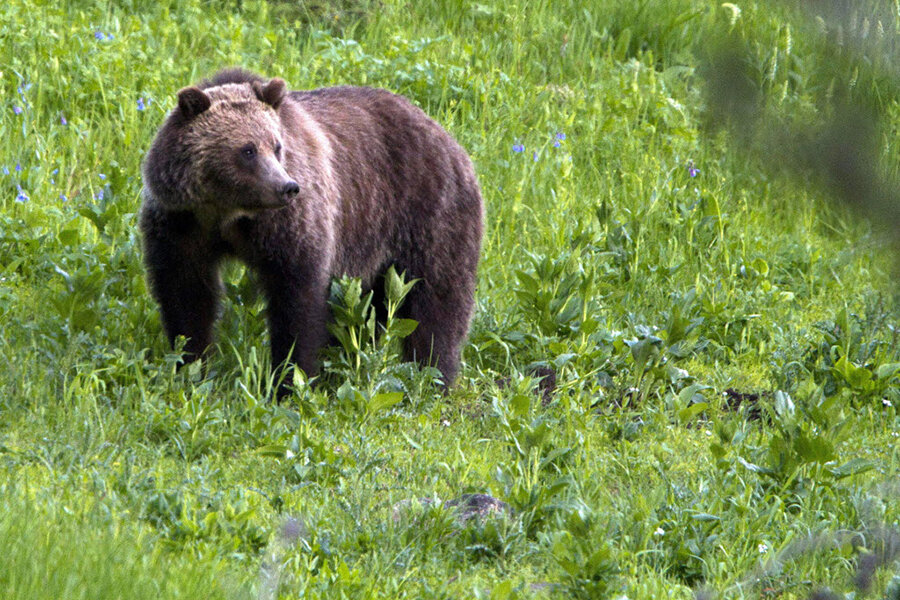No longer endangered? Montanans prepare for grizzly bear hunt
Loading...
Could the grizzly bear soon be in hunters’ sights? With federal officials moving forward with removing grizzlies from the list of endangered species, it looks like a possibility.
Montana Fish, Wildlife and Parks released draft regulations Wednesday that include spring and fall hunting seasons in seven districts near the borders of Yellowstone National Park.
Each district, known as a Grizzly Bear Management Unit, would have a quota on the number of bears that can be killed, reports the Bozeman Daily Chronicle.
The move is opposed by some conservation groups, but comes as the US Fish and Wildlife Service issued a draft rule on removing the bears, which have been listed as a threatened species since 1975, from its list.
The Fish and Wildlife Service’s draft, released in March, calls for caps on how bears can be killed in a 19,729-square-mile area that includes Yellowstone National Park and parts of Idaho, Montana, and Wyoming. The caps may vary depending on the areas’ populations.
The federal plan would give Wyoming 58 percent of the total bears that can be killed, 34 percent to Montana, and 8 percent to Idaho.
Federal officials expect a final rule will be in place later this year, and have required that states have in place a plan to manage the bears, Montana FWP spokesman Ron Aasheim told the Daily Chronicle.
“This is a first attempt at hopefully a management option that we’re going to have here down the road,” he said.
No state hunting will take place until the final federal proposal, which is expected to include the states’ hunting plans.
The bears were briefly delisted in 2007 but were reinstated after a lawsuit. A similar conflict appears to be brewing between groups that hope to revive sport hunting of the bears and environmentalists who say the population hasn’t revived sufficiently to be removed as an endangered species.
Another concern, as the Monitor reported in November, is about the oversight of the state officials who, conservationists argue, allowed the bears to numbers to dwindle in the first place.
Particularly, the two sides of the delisting battle have gone back and forth over whether remaining grizzlies will become aggressive ‘conflict bears,’ inhabiting areas near towns, the Monitor reported.
But some say the bears are simply appearing more often near humans in a search for food that can no longer be found in Greater Yellowstone.
“Grizzlies are notoriously slow to reproduce,” David Mattson, an adjunct professor at Yale University who has long studied the bears told the Monitor. “And we also know from history that the difference between a rising or steady population and one that tumbles into decline can be higher mortality of female bears, by just a few percentage points, over a few years.”
But some groups in favor of delisting say Montana’s proposal will prevent hunters from eliminating too many bears. “I think the agency has put in a lot of safeguards to ensure we don’t have an overharvest,” Nick Gevock, conservation director of the Montana Wildlife Federation told the Daily Chronicle.
Other conservationists argue the bears are still vulnerable. Bonnie Rice, of the Sierra Club, noted that 61 bears were killed last year even though no hunting took place, calling the regulations “completely misguided.”
Under the state’s rules, licenses will be limited based on the bear quotas, and hunters who gain a license will have to wait seven years before gaining another. License holders will also have to take a course teaching them to differentiate between black bears and grizzly bears as well as male and female bears.
There’s also a requirement that any grizzlies killed have to be alone to protect females and young bears from hunters, the Daily Chronicle reports.
This report contains material from the Associated Press.







